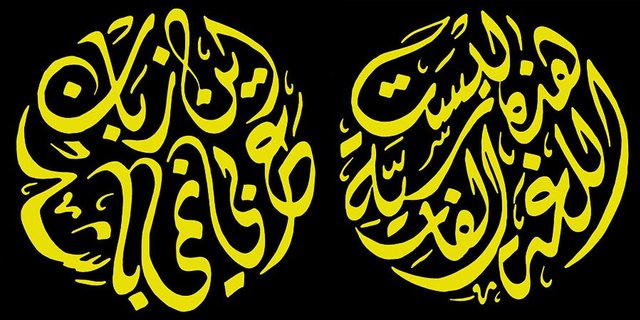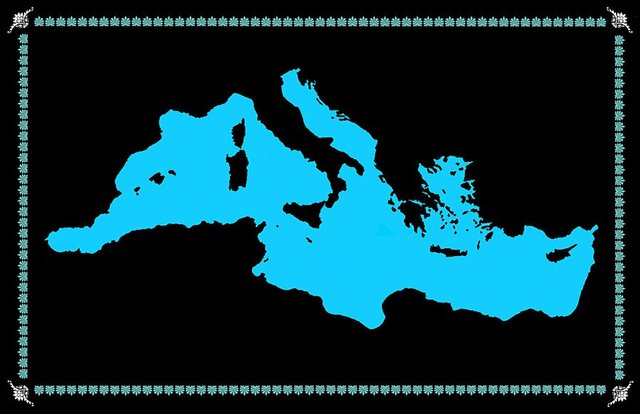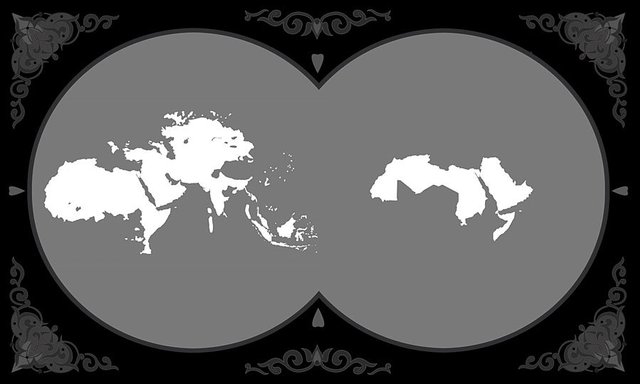Projects
Incomprehensible
For the work Incomprehensible, I have chosen to present two sentences in both Arabic and Farsi using traditional calligraphy in a circular design. The design in Farsi reads: 'This is not Arabic', while the other, in Arabic, reads: 'This is not Farsi'. Both statements can be read, of course, only by Arabic or Farsi speakers. And while both phrases, visually at least to the non-Arabic, non-Farsi speaking viewer, seem to share the same alphabet, their meanings are completely different. I frequently use Arabesque design motifs and graphics in my work; they are part of my everyday visual language here in the Gulf, where I live.
Since moving to Sharjah, I began working with maps, interested in the idea of the alteration of borders and also of how Islam is often misconceived in the west. The Muslim and Arab worlds are frequently conflated to people not from either, and in this work for Ibraaz, I realign the borders to show how much more populous the Muslim world is compared to the Arab world. The first work I did on this subject was Map of Faith, which I presented for Ibraaz and also as part of the exhibition CHKOUN AHNA in Carthage earlier this year. We recognise the world according to political delineations on maps and I wanted to try to realign the borders, to try to distract and maybe disorient the viewer in confrontation with this work. When I showed the work in Tunis, people wondered where France, for example, had disappeared to – they couldn't find it. But I also wanted to realign the work in terms of religious borders. I am currently working on another map project that seeks to show the world according to ethnic groups. It's rather like a puzzle, in which I am moving around the pieces according to religious or ethnic data. The areas of slippage along the traditional borders particularly interest me, the areas where two countries overlap in a sort of Venn diagram. There is a political border separating Afghanistan from Pakistan, for example, but there is also an area along this demarcation line that constitutes an ethnic border, which is shared and connects one country to the other.
I personally converted to Islam a few years ago when I married my wife, who is Muslim. While I don't use biographical elements in my work per se, my work is nevertheless a translation or a rendition of my personal experience of passing from one culture and tradition to another. Changing my name, from Giuseppe to Yousef, was important and also symbolic – it was a kind of re-branding, so to speak. Being from southern Italy, which has a lot of Arab influences, has further resonance in my work, and I have recently created a new piece looking at how the Mediterranean Sea is the connecting route between several cultures, and showing the Mediterranean almost as a country in its own right. Yousef Moscatello


















